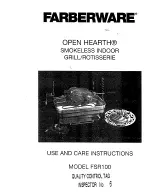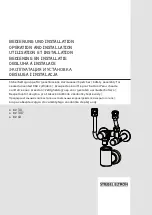
3064816_201804
25
13. Fitting the trap
The trap must be filled with water prior to
commissioning. Operating the appliance with
an empty trap presents a risk of poisoning or
asphyxiation due to flue gases escaping. Un
-
screw the trap, remove and fill until water runs
out of the drain hole on the side. Refit the trap
and ensure the gasket seals tightly.
Before commissioning, carry out a tightness
test on all hydraulic pipework:
Test pressure on the DHW side max. 10 bar
Test pressure on the heating water side max.
4.5 bar
Condensate connection
First, grip the control unit cover on the r.h. side and swivel to the
side. Then undo the two screws on the r.h. and l.h. sides of the
front casing. The front casing can then be released upwards.
Fill the supplied trap with water and connect it to the conden-
sate pan connector.
The drain hose must be safely secured above the tundish
(trap).
If the condensate is directly routed to the sewer pipe, provide
a ventilation facility. This is to prevent retroactive effects from
the sewer pipe to the gas condensing boiler.
If installing a neutralising system (accessory), observe the
instructions supplied.
According to Code of Practice DWA-A- 251 [Germany], no
neutralising system is required for condensing boilers up to
200 kW.
If a neutralising system is used, the national regulations
regarding the disposal of residues from such systems apply.
Fig.: Trap
















































